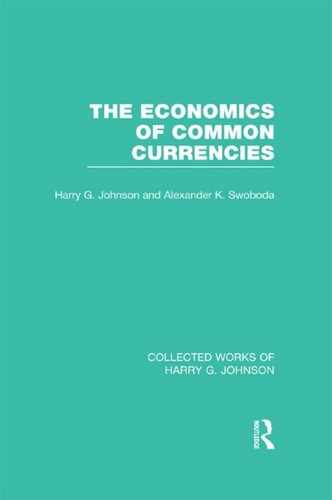0%
31Chapters
0-1Hours read
0kTotal Words
Book Description
Gathering together the papers presented at the Madrid Conference on Optimum Currency Areas in 1970 this volume represents one of the first complete surveys of the theory and policy implication of monetary integration. The book discusses:
- the economics of fixed exchange rates relevant to monetary relations within an integrated monetary area
- the evolution of economic doctrine and a survey of optimum currency area theory
- problems of policy co-ordination within a currency area
- relevance of the monetary-fiscal policy mix
- problems of monetary union in developing countries
- the book predicted the establishment of an European currency but presented the case for greater flexibility of exchange rates as an alternative to currency unification.
Table of Contents
- Cover
- Half Title
- Title Page
- Copyright Page
- Original Copyright Page
- Contents
- Foreword Robert A. Mundell
- Participants
- Introduction Harry G. Johnson and Alexander K. Swoboda
- PART I THE ECONOMICS OF FIXED EXCHANGE RATES
- PART II THE ECONOMICS OF COMMON CURRENCY AREAS
- 5 Some Early Views on Monetary Integration
- 6 The Theory of Optimum Regional Associations
- 7 Uncommon Arguments for Common Currencies
- 8 Policy Conflict, Inconsistent Goals, and the Coordination of Economic Policies
- 9 A Plan for a European Currency
- 10 The Impact of External Markets for National Currencies on Central Bank Reserves
- 11 Joint Balance: Capital Mobility and the Monetary System of a Currency Area
- 12 Optimum Currency Areas and Latin America
- PART III THE ECONOMICS OF FLEXIBLE EXCHANGE RATES
- 13 The U.S. Balance of Payments: Freedom or Controls
- 14 Flexing the International Monetary System: The Case for Gliding Parities
- 15 Specific Proposal for Limited Exchange Rate Flexibility
- 16 Flexible Exchange Rates and Traded Goods Prices: The Role of Oligopoly Pricing in the Canadian Experience
- 17 The Optimal Rate of Devaluation
- Index
